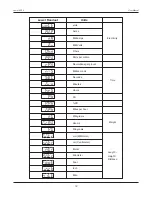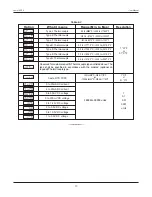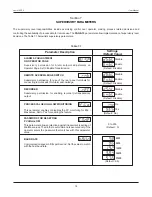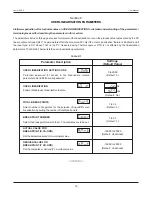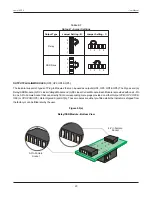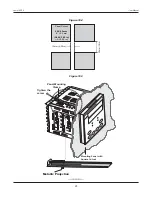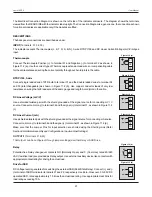
26
1. The user must rigidly observe the Local Electrical Regulations.
2. Do not make any connections to the unused terminals for making a tie-point for other wires (or for any other reasons) as
they may have some internal connections. Failing to observe this may result in permanent damage to the indicator.
3. Run power supply cables separated from the low-level signal cables (like Thermocouple, RTD, DC Linear Current/Voltage
etc.). If the cables are run through conduits, use separate conduits for power supply cable and low-level signal cables.
4. Use appropriate fuses and switches, wherever necessary, for driving the high voltage loads to protect the indicator from
any possible damage due to high voltage surges of extended duration or short-circuits on loads.
5. Take care not to over-tighten the terminal screws while making connections.
6. Make sure that the indicator supply is switched-off while making/removing any connections or removing the indicator from
its enclosure.
CONNECTION DIAGRAM
(The rear panel electrical wiring connection diagram is shown in Figure11.1 below.)
WARNING
MISHANDLING / NEGLIGENCE CAN RESULT IN
PERSONAL DEATH OR SERIOUS INJURY.
WARNING
MISHANDLING / NEGLIGENCE
CAN RESULT IN PERSONAL DEATH
OR SERIOUS INJURY.
ELECTRICAL CONNECTIONS
User Manual
neuro 100EX
Figure 11.1
Section 11
85 ~ 265 V
AC SUPPLY
L
N
T/C
Pt100
1
2
3
4
5
13
7
12
8
14
9
15
16
17
11
18
10
6
DC LINEAR
SSR
SSR / DC Lin
RLY
NO
C
OP-1
SSR / DC Lin
RLY
NO
C
OP-2
RLY
NO
C
OP-3
RLY
NO
C
OP-4
SSR
SSR / DC Lin
RLY
NO
C
OP-5
Ext. Voltage
SERIAL COMM
B+
GND
B-
19
20
21
22
23
24
25
30
26
27
29
28
31
32
33
34
35
36
39
38
37
DI-1
DI-2
BACK PANEL CONNECTIONS
neuro 100EX

